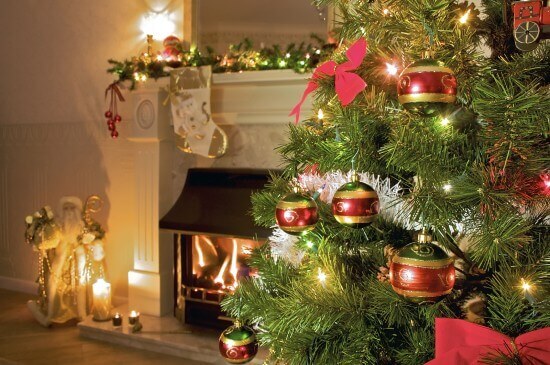
One of the most popular Christmas traditions is choosing and then decorating a Christmas tree. Almost all practicing, or even non-practicing Christians put up a Christmas tree each year. But where does this tradition come from? Why do we stick a dead evergreen tree in our front living room, proceed to cover it in random items and lights, and then wait until it becomes crispy to throw it out? It’s rather strange if you think about it,so let’s talk about why Christmas trees exist, where they come from and why we have them today.
The Christmas tree is believed to have come from pre-Christian pagan cultures. These pagan people may have believed that evergreen trees were magical. Just think about it- an evergreen tree stays strong and green throughout all the cold and dead months of winter. When all other plant life is brown and bare, the evergreen stays strong. It’s no wonder that the evergreen was seen as a symbol of life and the return of spring. Even in ancient Rome, people used greenery to decorate their homes and temples during a special December feast. During this time no battles would be fought and people joined together for festivities and gifts.
Some relatively conservative Christians have pointed out that the Bible condemns the use of a tree for religious purposes (putting Christians on the same level with pagan tree worshippers). However, moderate Christians point out that the Bible’s condemnation of trees is reserved for those who actually worship the trees. Since the overwhelming majority of Christians are not actually worshipping the Christmas tree, the majority of Christians have chosen to continue the tradition of putting up a Christmas tree.
Even though Christmas trees may have originated from ancient pagan traditions, they can more recently be traced to early Germany. The legend goes that St. Boniface, the man who converted the Germanic people to Christianity, one day came across a group of pagans worshipping an oak tree. In his anger at their continued pagan behavior, St. Boniface cut the oak tree down at the roots. Then, to his shock, a young fir tree immediately sprung up from the roots of the oak tree. The saint took this as a sign of the Christian faith. This may be a reason why Christians have chosen an evergreen tree as their symbol of their most joyful holiday. However, it wasn’t until the late 1500s that fir trees made it indoors as a celebration of Christmas.
History records in the Bremen Guild Chronicle of 1570 that a small fir tree was decorated with apples, nuts, dates, pretzels, and paper flowers to celebrate Christmas. Then the tree was stood up in the house to delight the children, who were allowed to collect the decor from the tree on Christmas day. Another reference suggests that a tailor’s apprentice carried a tree decorated with apples and cheese all around town to celebrate Christmas. Other legends say that Martin Luther decorated a small tree in his house to symbolize the ways the stars shined at night.
Whether or not any of the above mentioned stories are true, by the early 18th century, the custom of bringing an evergreen tree indoors for Christmas had become a tradition throughout the urban areas of Germany (it had not yet reached the most rural of areas). It was considered to be a Protestant custom, and therefore also did not immediately spread to the Catholics in the area. But by the mid 1800s, most of Germany had adapted the practice of trimming a Christmas tree. In the 1840s the German Prince Albert (who married Queen Victoria) set up a Christmas tree in England to remind him of home. This custom was then spread to the United States from English and German immigrants. Since then, the Christmas tree has spread throughout the world.

Leave a Reply